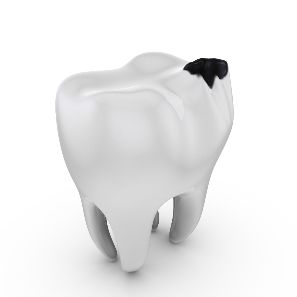 Have you ever wondered why some cavities can be fixed with simple fillings while others require more extensive dental work like a root canal or crown? The short answer is that it depends on how far the tooth decay has progressed. When you see a dentist in Ponte Vedra Beach for checkups, they look closely at each tooth and use diagnostic tools like X-rays to determine if you have any decay and what stage it’s in. Then they use that information to recommend treatment. If you’d like to know more about the stages of tooth decay and the types of dental procedures recommended for each one, keep reading below!
Have you ever wondered why some cavities can be fixed with simple fillings while others require more extensive dental work like a root canal or crown? The short answer is that it depends on how far the tooth decay has progressed. When you see a dentist in Ponte Vedra Beach for checkups, they look closely at each tooth and use diagnostic tools like X-rays to determine if you have any decay and what stage it’s in. Then they use that information to recommend treatment. If you’d like to know more about the stages of tooth decay and the types of dental procedures recommended for each one, keep reading below!
What Are the Stages of Tooth Decay?
First, it’s helpful to understand some basic tooth anatomy. Teeth are made of minerals such as magnesium, phosphorous and calcium that make them hard and tough. Every tooth has three layers.
The outer layer is called enamel, which is the hardest substance in the body. The middle layer is called dentin and is a bit softer. Finally, the innermost layer is called the pulp (or nerve canal because it contains the nerve and blood supply of the tooth).
Here are the stages of decay:
- Demineralization – When the enamel has lost some of its mineral content, it isn’t as hard or as tough as it was before. At this stage, it isn’t a full-blown cavity yet and might look like a chalky white or brown area on the tooth.
- Decay in the enamel layer – In this stage, the enamel has been damaged. Some people may feel temperature sensitivity but probably won’t have pain yet.
- Decay in the dentin layer – When decay has reached the dentin layer, it’s closer to the nerve, so many people will begin feeling some pain at this stage.
- Infection of the nerve canal – When decay reaches the nerve of the tooth, it causes an infection that can lead to a severe toothache.
- Abscess – An abscess is when an infection from the tooth has spread to the surrounding tissues. It can look like a pimple-like bump on the gums or cause facial swelling.
How Is Tooth Decay Treated?
The treatment for decay is much easier in the earlier stages! In fact, in the demineralization stage, it can actually be reversed with nothing more than good hygiene and topical fluoride, which remineralizes the enamel.
However, once decay progresses past that initial stage, it requires dental work to restore the damaged tooth. A filling can be done for cavities in the enamel layer, while larger cavities that have reached the dentin layer might require a crown.
When decay has reached the pulp of the tooth, a root canal and crown are usually recommended to save the tooth from being extracted.
As you can see, catching tooth decay as early as possible is much more preferable to letting it progress!
About the Author
Dr. Kristopher Harth is a general, cosmetic and restorative dentist who understands the power of prevention. He always encourages his patients to come in for regular checkups so that any potential cavities can be treated in the earliest stage possible. If you have any questions, he can be reached via his website or at (904) 285-7711.



